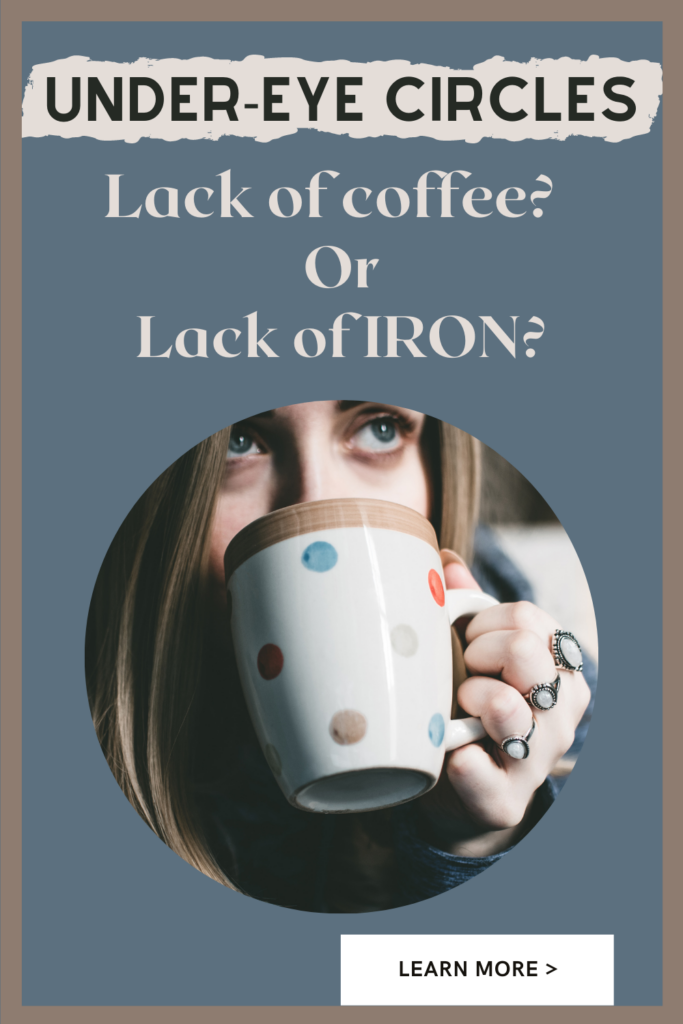Are the dark circles under your eyes caused by iron deficiency? Dark circles and iron deficiency, many times go hand-in-hand.
This is because without adequate iron, the body is unable to properly circulate oxygen. Hemoglobin the protein that transports oxygen on red blood cells breaks down when there is insufficient iron. This breakdown of hemoglobin causes the thin skin below your eyes to appear bruised or create those dark circles.
Not to worry, insufficient iron levels can be remedied by increasing ferritin to optimal levels. This will stop the breakdown of hemoglobin and those pesky dark circles.
If you have dark circles around your eyes, get your iron, ferritin, and TIBC checked, to rule out an iron deficiency. The optimal range for ferritin for most people is between 50-70 ng/ml. Optimize your ferritin levels with a hydrolyzed whole protein chelated iron to help reduce periorbital dark circles within 4-6 weeks.

Other causes of dark under-eye circles
- Poor sleep habits or hygiene
- Lack of sleep either in quantity or quality can cause the blood vessels under your eyes to dilate. Given the thinner skin and close proximity to the underlying bone, blood flow around your eyes can cause a dark appearance. As I am sure you are aware, eye bags and puffiness are also common with a lack of quality sleep. For help with sleep quality check out this article.
- Allergies
- Dust mite allergies are a common cause of periorbital dark circles. Get tested for dust-mite allergies as well as potential food sensitivities as they are common causes of dark under eye circles.
- If allergies are present, be sure to reduce exposure to the allergen as well as look into SLIT (Sublingual Immunotherapy). SLIT can be very effective in safely creating allergen tolerance and symptom reduction.
- Thyroid disease
- Thyroid illness, especially low thyroid function or hypothyroidism causes excess fluid retention, particularly around the eyes. This excess fluid pulls down on the under-eye skin creating a bag-like appearance.
- Thyroid tests include – TSH, Free T4, Free T3, Reverse T3, anti-thyroglobulin antibody, and anti-thyroid peroxidase antibodies.
- Dehydration
- Blood vessels around the eyes are more prominent when the skin is dehydrated. This is because the skin around the orbit is thin and sits very close to the underlying bone.
- Aim to consume 1/3 of your body weight in ounces of water per day to maintain proper hydration.
- Avoid or limit highly processed foods, drinking alcohol, smoking, and medication use, which all increase the need for water.
- Thinning skin under eyes from natural aging or corticosteroid use
- As mentioned above, the skin around your orbit is thin. Aging and steroid use leads to the breakdown of collagen. Collagenase is the enzyme that enables more collagen and stronger connective tissue formation. It is therefore important to limit corticosteroid use if you want to maintain collagen around your eyes.
Have you been able to get rid of dark under-eye circles? I’d love to hear about it in the comments below.

